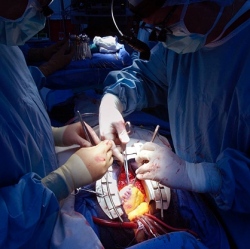
Researchers at Columbia University Medical Center (CUMC) have transformed human stem cells into functional lung cells, paving the way for ultimately creating bioengineered lungs using the patient’s own cells. Besides being able to generate lung tissue for transplants, these cells could also be used to study lung development and potentially find more advanced treatments for lung diseases.
While scientists have been able to successfully transform human stem cells into different types of cells such as nerve, retina and blood cells, creating working lung and airway cells proved to be a challenge.
"When an embryo develops, it first makes three layers of cells, or germ layers – ectoderm, which will become the skin and nervous system, mesoderm, which will become the heart, muscle, connective tissues, blood vessels, blood and kidney, and endoderm, which will become the intestine, liver, pancreas, stomach, esophagus, thyroid, thymus parathyroids, and lung," study leader Hans-Willem Snoeck tells Gizmag. "The endoderm forms last which is probably one reason why it is harder to specify from stem cells."
Studies that used the mouse embryo as a model couldn’t demonstrate how the lung part of the endoderm formed. It wasn’t possible for researchers to create lung cells until 2011, when Snoeck discovered a way to turn human embryonic stem cells into a particular type of cell, that were the precursors of lung cells.
"That was the first breakthrough that allowed this breakthrough," Snoeck explains. "We used what we knew from mouse development, and had to discover a few novel tricks."
